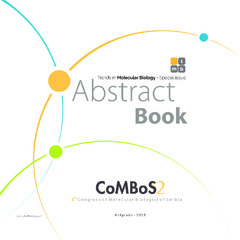Приказ основних података о документу
Molecular basis of thalassemia syndromes in Serbia: an update
| dc.creator | Ugrin, Milena | |
| dc.creator | Komazec, Jovana | |
| dc.creator | Klaassen, Kristel | |
| dc.creator | Skakić, Anita | |
| dc.creator | Anđelković, Marina | |
| dc.creator | Spasovski, Vesna | |
| dc.creator | Stevanović, Nina | |
| dc.creator | Parezanović, Marina | |
| dc.creator | Stanković, Sara | |
| dc.creator | Stojiljković, Maja | |
| dc.creator | Pavlović, Sonja | |
| dc.date.accessioned | 2023-10-16T12:11:15Z | |
| dc.date.available | 2023-10-16T12:11:15Z | |
| dc.date.issued | 2023 | |
| dc.identifier.isbn | 978-86-7078-173-3 | |
| dc.identifier.uri | https://imagine.imgge.bg.ac.rs/handle/123456789/2139 | |
| dc.description.abstract | Introduction: Thalassemia syndromes are heterogeneous group of hereditary anemias characterized by defects in the synthesis of hemoglobin (Hb) polypeptide chains. These disorders comprise thalassemias and thalassemic hemoglobin variants which are predominantly caused by mutationsin a- and b-globin genes (HBA and HBB genes). Clinical manifestations of thalassemia syndromes range from asymptomatic thalassemia minor to severe anemia in thalassemia major cases. The aim of thisstudy was to update our previous findings on frequency of thalassemia mutations which result from a 13-year-old systematic survey in Serbia. Methods: Two hundred and fourteen patients from 149 unrelated families presented with hematological parameters indicative of thalassemia syndromes were studied. Detection of α- and β-globin gene mutations was performed using PCR and direct sequencing. Results: Two Hb variants and twelve different β-thalassemia mutations, including two mutations previously not reported in Serbian population, were detected. Hb variant Lepore Boston-Washington wasthe most common cause of thalassemia, with frequency of 24.3%, followed by HBB:c.316-106C>G mutation detected in 18.1% of families. The third most frequent cause of β-thalassemia were HBB:c.118C>T and HBB:c.93-21G>A mutations with 16.6% incidence each. Together, these four variants account for over 75% of all mutated β-globin alleles. In addition, five families affected with α-thalassemia were detected. Conclusion: Despite the increase in cohort size by 50% between this and our previous studies, the frequency of mutations affecting HBB gene remained unchanged. Results presented in this study will update Serbian national mutation database and contribute to better understanding of geographic history of South European and Balkan populations. | sr |
| dc.language.iso | en | sr |
| dc.publisher | Institute of Molecular Genetics and Genetic Engineering (IMGGE), University of Belgrade | sr |
| dc.relation | info:eu-repo/grantAgreement/MESTD/inst-2020/200042/RS// | sr |
| dc.rights | openAccess | sr |
| dc.source | CoMBoS2 – the Second Congress of Molecular Biologists of Serbia, Abstract Book – Trends in Molecular Biology, Special issue 06-08 October 2023, Belgrade, Serbia | sr |
| dc.subject | thalassemia syndromes | sr |
| dc.subject | Hb variants | sr |
| dc.subject | β-thalassemia mutations | sr |
| dc.subject | Serbia | sr |
| dc.title | Molecular basis of thalassemia syndromes in Serbia: an update | sr |
| dc.type | conferenceObject | sr |
| dc.rights.license | ARR | sr |
| dc.citation.epage | 86 | |
| dc.citation.spage | 86 | |
| dc.identifier.fulltext | https://imagine.imgge.bg.ac.rs/bitstream/id/424288/Molecular_basis_of_thalassemia_conf.pdf | |
| dc.identifier.rcub | https://hdl.handle.net/21.15107/rcub_imagine_2139 | |
| dc.type.version | publishedVersion | sr |

